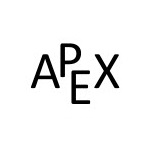2.2.1: Ejercicios 2.2
- Page ID
- 114037
Términos y Conceptos
Ejercicio\(\PageIndex{1}\)
En sus propias palabras, explique lo que se entiende por una estricta desigualdad.
- Responder
-
Una estricta desigualdad significa que tenemos\(>\) or \(<\).
Ejercicio\(\PageIndex{2}\)
En sus propias palabras, describa las dos formas en que podemos tener puntos de quiebre.
- Responder
-
Tenemos puntos de quiebre cuando la declaración de igualdad es verdadera o donde la declaración es indefinida.
Ejercicio\(\PageIndex{3}\)
¿Una declaración siempre cambia de verdadero a falso en un punto de ruptura? Da un ejemplo para apoyar tu argumento.
- Responder
-
No, la declaración\(x^2 >0\) is always true, but has a break point at \(x=0\).
Ejercicio\(\PageIndex{4}\)
¿Qué métodos puedes usar para encontrar los puntos de quiebre de una igualdad cuadrática?
- Responder
-
Tenemos que mover todo a un lado, y luego podemos factorial o usar la fórmula cuadrática para encontrar las raíces.
Problemas
En ejercicios\(\PageIndex{5}\) -\(\PageIndex{11}\), escriba cada declaración en notación de intervalo simplificada.
Ejercicio\(\PageIndex{5}\)
\(-3\leq x \leq 10\)
- Responder
-
\(x \in [-3,10]\)
Ejercicio\(\PageIndex{6}\)
\(x \geq -5\) and \(x>2\)
- Responder
-
\(x \in (2, \infty)\)
Ejercicio\(\PageIndex{7}\)
\(x \geq -5\) and \(x<2\)
- Responder
-
\(x \in [-5,2)\)
Ejercicio\(\PageIndex{8}\)
\(x \leq -5\) and \(x>2\)
- Responder
-
no hay valores de\(x\) satisfy this statement
Ejercicio\(\PageIndex{9}\)
\(x \geq -5\) or \(x>2\)
- Responder
-
\(x \in [-5, \infty)\)
Ejercicio\(\PageIndex{10}\)
\(x\leq 4\) and \(x>-6\)
- Responder
-
\(x \in (-6,4]\)
Ejercicio\(\PageIndex{11}\)
\(x > 4\) or \(-2>x\)
- Responder
-
\(x \in (-\infty,-2)\cup (4,\infty)\)
En ejercicios\(\PageIndex{12}\) -\(\PageIndex{14}\), escribir cada enunciado usando desigualdades.
Ejercicio\(\PageIndex{12}\)
\(x \in [3,4)\cup (4,\infty)\)
- Responder
-
\(3 \leq x <4\) or \(x>4\)
Ejercicio\(\PageIndex{13}\)
\(x \in [-2,4)\)
- Responder
-
\(-2 \leq x < 4\)
Ejercicio\(\PageIndex{14}\)
\(x \in (5,6] \cup [7,8)\)
- Responder
-
\(5 < x \leq 6\) or \(7 \leq x <8\)
En ejercicios\(\PageIndex{15}\) -\(\PageIndex{26}\), resuelve la desigualdad dada y expresa tu respuesta en notación de intervalos.
Ejercicio\(\PageIndex{15}\)
\(\displaystyle \frac{x-2}{x-4} \leq 0\)
- Responder
-
\(\displaystyle x \in [2,4)\)
Ejercicio\(\PageIndex{16}\)
\(\displaystyle x^2-2x+ 8 \leq 2x+5\)
- Responder
-
\(\displaystyle x \in [1,3]\)
Ejercicio\(\PageIndex{17}\)
\(\displaystyle x^2+2x >15\)
- Responder
-
\(\displaystyle x \in (-\infty,-5) \cup (3,\infty)\)
Ejercicio\(\PageIndex{18}\)
\(\displaystyle -x^2+7x+10 \geq 0\)
- Responder
-
\(\displaystyle x \in \Big[\frac{7-\sqrt{89}}{2}, \frac{7+\sqrt{89}}{2} \Big]\)
Ejercicio\(\PageIndex{19}\)
\(\displaystyle \frac{x+3}{x-2} -2 \leq 0\)
- Responder
-
\(\displaystyle x \in (-\infty,2) \cup [7, \infty)\)
Ejercicio\(\PageIndex{20}\)
\(\displaystyle 2x^2-4x-45 \leq -4x+5\)
- Responder
-
\(\displaystyle x \in [-5,5]\)
Ejercicio\(\PageIndex{21}\)
\(\displaystyle \frac{3x+1}{x-2} \leq 2\)
- Responder
-
\(\displaystyle x \in [-5,2)\)
Ejercicio\(\PageIndex{22}\)
\(\displaystyle 1+x<7x+5\)
- Responder
-
\(x \in (\frac{-2}{3}, \infty)\)
Ejercicio\(\PageIndex{23}\)
\(\displaystyle \theta^2 - 5\theta \leq -6\)
- Responder
-
\(\displaystyle \theta \in [2,3]\)
Ejercicio\(\PageIndex{24}\)
\(\displaystyle y^3+3y^2 > 4y\)
- Responder
-
\(\displaystyle y \in (-4,0) \cup (1,\infty)\)
Ejercicio\(\PageIndex{25}\)
\(\displaystyle x^3-x^2 \leq 0\)
- Responder
-
\(\displaystyle x \in (-\infty,1]\)
Ejercicio\(\PageIndex{26}\)
\(\displaystyle \frac{x^2+3x+2}{x^2-16} \geq 0\)
- Responder
-
\(\displaystyle x \in (-\infty,-4)\cup [-2,-1] \cup (4,\infty)\)


